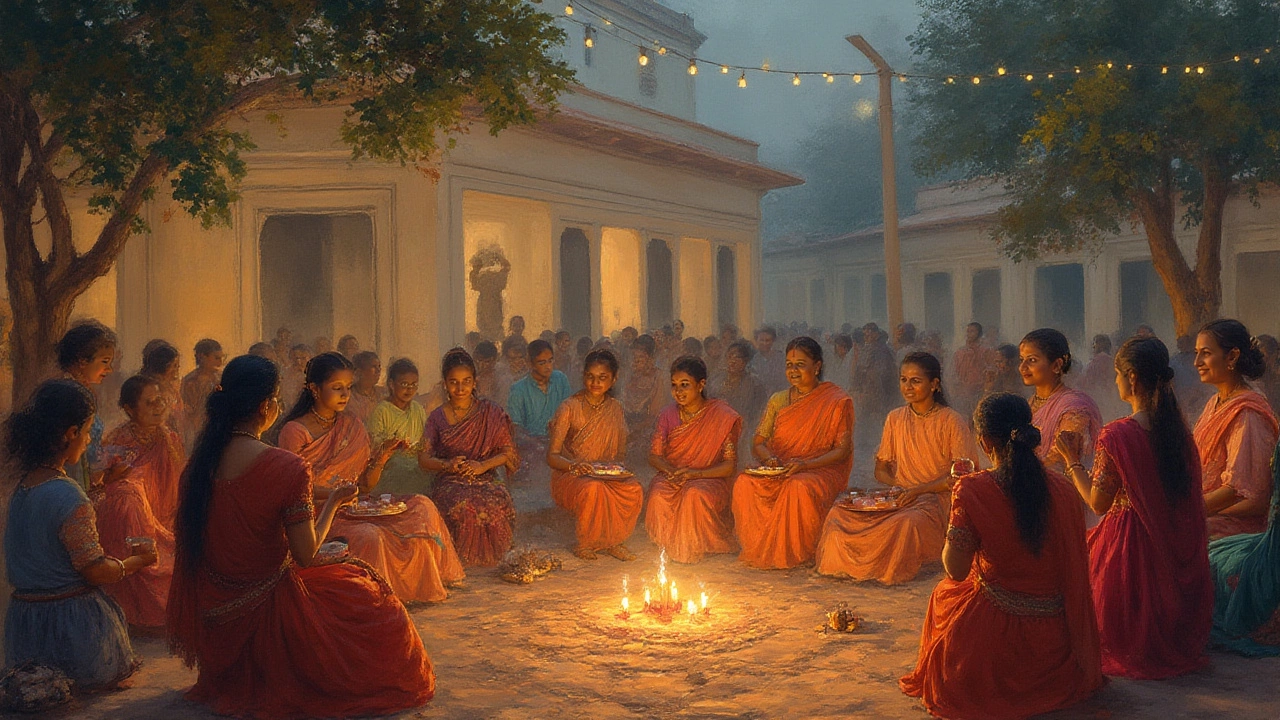Imagine a room full of strangers who turn into close friends over late-night debates, board game showdowns, and the shared chaos of life’s little moments. This is the heartbeat of a social club. There’s no shortage of reasons people gather—bookworms flock to discuss stories, artists come together to spill paint and secrets, and neighbors search for a bit of laughter to break the dull routine. But what ties these gatherings together is way more powerful than simply “hanging out.” Social clubs have a purpose that’s both practical and quietly revolutionary: they’re about creating belonging.
Why Social Clubs Exist: Beyond the Obvious
So, what’s the real point behind forming a social club? From the outside, it may look like nothing more than a crowd of hobbyists or old friends cracking jokes. But dig deeper, and you’ll see these clubs fill a void modern life often leaves empty. The primary mission isn’t complicated—the core reason for a social club is human connection. It’s not about who has the fanciest venue or the longest roster. It’s about giving people a safe, familiar space to be themselves and let others in. That’s been true for centuries, whether you’re in a 19th-century reading society, a bowling league that’s seen better days, or a bustling cycling group.
Harvard researchers famously found that strong social relationships can add years to your life. This isn’t small talk—it’s as crucial as not smoking or having a healthy diet. Social clubs, without even trying, become natural life extenders. With regular get-togethers, folks find themselves surrounded by encouragement—whether they’re nursing a loss, chasing a goal, or simply looking for someone who gets their weird jokes. The point is, people thrive in groups, not silos. When you become part of a club, you’re not just passing time; you’re creating a fortress against loneliness.
Here’s an interesting nugget: in a recent national survey, almost 70% of people who attended social clubs regularly reported feeling significantly more connected and less anxious about everyday life compared to those who didn’t belong anywhere. You might notice that social clubs work a lot like glue. They hold together the odd patchwork of personalities life tosses our way. Some clubs are interest-first (like chess or wine-tasting), while others are more about the people, meeting over potlucks with no bigger agenda than sharing stories. It doesn’t matter—the purpose stays the same: find your tribe and stick with them.
And the perks go beyond fun and games. Many social clubs organically develop into lifelines—the go-to for rides to the doctor, job leads, or just a hot meal shared with someone who cares. When life doles out its inevitable blows, the support network you build at a club can be the difference between sinking and keeping your head above water. Adding to that, for communities in big cities—where most folks say it’s hard to know their own neighbors—these clubs punch holes in the wall of isolation and make the world smaller, warmer, and less intimidating.
Of course, every club leaves its own stamp. Some kickstart charity programs, mentor local teens, or pursue shared goals (think running a big event, publishing a newsletter, or maintaining a community garden). The secret sauce is shared purpose. People feel more alive when what they do matters to others, not just themselves. So, if you ever wondered if social clubs serve any “main” purpose, let’s be plain: they’re built to turn the crowd into a community.

How Social Clubs Strengthen Communities
From the outside, clubs might look like a simple crowd gathering for coffee or trivia night. But the ripple effect spreads further than you’d expect. Social clubs don’t just help individuals; they strengthen the whole community. For starters, they’re proven to boost civic engagement. That might sound obvious, but stick with me—people who belong to clubs are much more likely to volunteer, vote, and stay informed about what’s happening around them. When folks feel invested, they get out there and make changes count.
You might be surprised to learn that according to a 2023 community survey by Statista, neighborhoods with active social clubs saw a 20% uptick in local volunteering efforts. Why? It comes down to trust. When you’ve got real-life friends in your club, you trust your community more—that means more folks pitching in, more shared projects, and less "someone else will handle it." Clubs regularly organize everything from neighborhood cleanups to fundraising for local shelters, and it doesn’t take an army. A handful of committed people can move mountains together, simply because their friendship makes group action easier.
Think about youth programs for a second. Over half of today’s successful social clubs have some arm dedicated to mentoring or supporting younger members. These clubs become a soft landing spot for teens who might not fit in elsewhere. Joining a club teaches kids how to work together, develop confidence, and learn outside of classroom walls—plus, it often keeps them out of trouble. There’s something about belonging that fends off isolation at any age.
It’s not just social connections, either. Clubs help local economies, straight up. Members might coordinate small business events, support local food drives, or run farmers’ markets. These activities draw in outside visitors, which means more dollars stay close to home. According to the World Economic Forum, communities with strong, active clubs tend to bounce back faster from economic slowdowns because their networks keep sharing opportunities and resources.
To lay it all out, here’s a quick snapshot of common activities found in many social clubs and the impact they have:
| Club Activity | Community Impact |
|---|---|
| Weekly meetups | Builds stable friendships, reduces isolation |
| Charity fundraisers | Supports local causes, sparks community involvement |
| Youth mentorship | Guides local teens, boosts confidence |
| Skill-building workshops | Teaches new abilities, helps job seekers |
| Organizing clean-ups | Keeps neighborhoods welcoming and safe |
Clubs also act as sounding boards for local issues. Instead of yelling into the social media void, people tackle real topics with real humans—even the sticky stuff like new development projects or school policies. These face-to-face chats build empathy and let quieter voices be heard. When people trust each other, they’re also more likely to disagree respectfully instead of tearing each other down.
A good tip for anyone starting out is to pick something with a shared goal. A “knitting for charity” club will attract those who want to create while making a difference. Even small, low-key clubs—like garden swap groups or neighborhood book exchanges—can have a big effect, because the real win is those bonds you build. If you’re not sure where to jump in, check out local libraries, bulletin boards, or social media groups centered on your city or neighborhood. Just remember: it’s not about how big the group is. Even tiny clubs can do huge things for a community when they stick to their purpose.

Tips for Getting the Most Out of a Social Club
Ready to dive in? Joining or starting a social club is easier than you think, and the upside is better than you might expect. But here’s the thing—getting it right takes a little know-how. First off, find a club that feels like you. If loud trivia nights aren’t your speed, search for something quieter, maybe a reading circle or a woodworking crew. When it comes to social clubs, fit matters. You don’t have to force yourself into an environment that doesn’t make you feel comfortable.
If you’re thinking about launching your own group, keep it simple at first. Focus on what really matters: common ground. Maybe that’s a shared hobby, a cause, or just the desire to not eat taco night dinner alone. Don’t obsess over structure or fancy membership fees to start—those things can come later. The magic is in the invite: “We were hoping you’d join.” People are way more likely to stick around if they feel truly welcomed.
Here are a few practical tips for making the most out of your time in a club:
- Show up regularly. Even if you’re shy, just being present earns trust and helps you blend in faster.
- Volunteer for small roles—a snack organizer, discussion leader, or photographer. These are low-pressure ways to get more involved and show others you care.
- Keep an open mind. Sometimes you’ll meet people way outside your usual circle. That’s a good thing! The best ideas spark from unexpected conversations.
- Don’t be afraid to ask questions or suggest a new activity. Most clubs love fresh ideas—just do it kindly and with some patience.
- Share the load. If you help set up or clean, others will remember and you’ll feel more like a core part of the group.
If you’re worried about awkward silences or not knowing anyone, that’s normal. Trust me, everyone feels this at some point. The secret? Time together, even if it’s just sharing bagels once a month, builds layers of comfort that stick. You’ll soon start to recognize faces, remember names, and even miss these hangouts when you skip them.
Remember, the purpose of a social club goes way beyond fun—it’s about weaving strong, supportive webs of community. In a world where loneliness is a public health crisis, finding a place where people know your story can change everything. So if you spot that lonely-looking gathering at the rec center or get a random invite for game night at your neighbor’s house, don’t brush it off. Give it a shot. You might just find the tribe you didn’t know you were missing.





